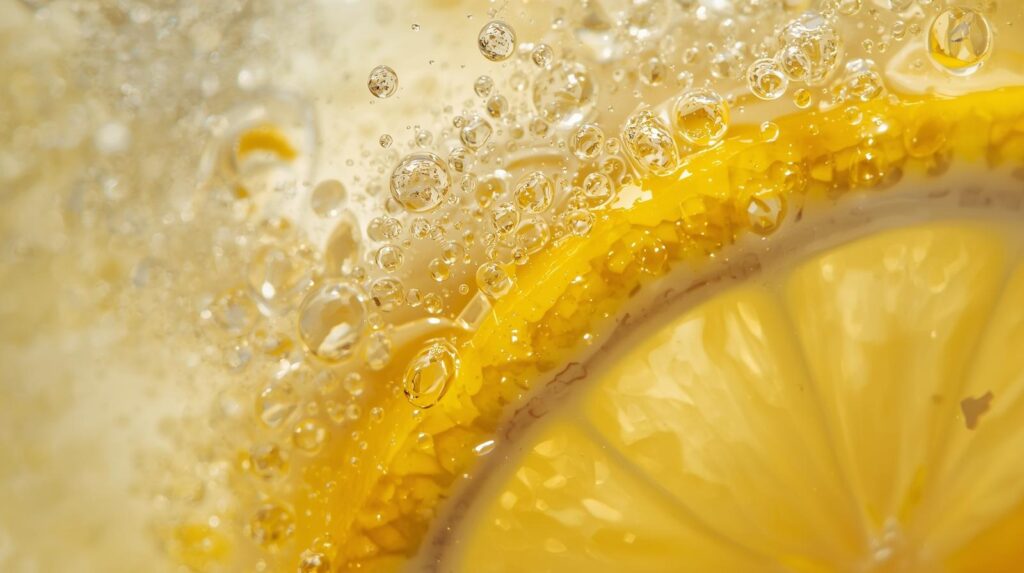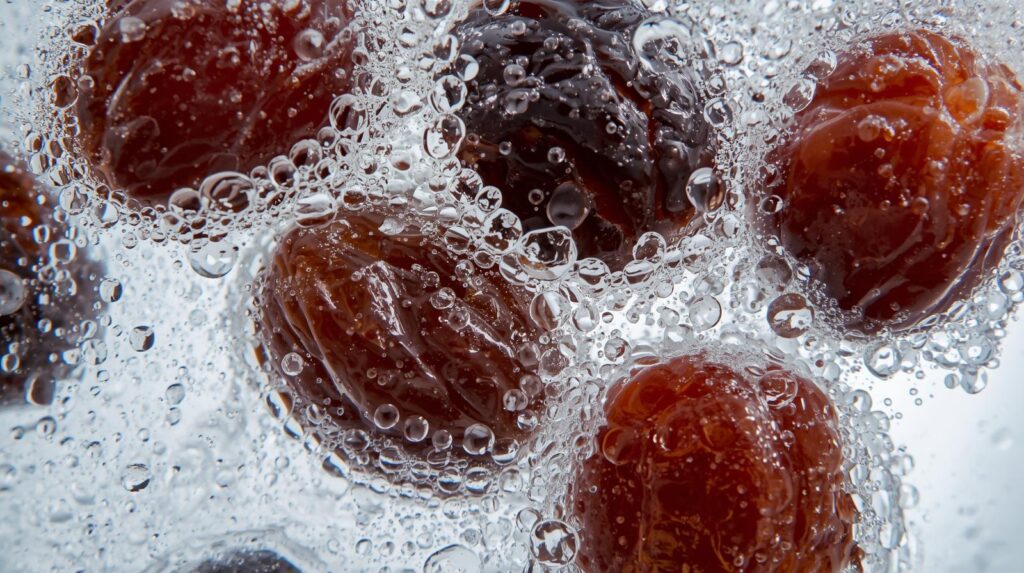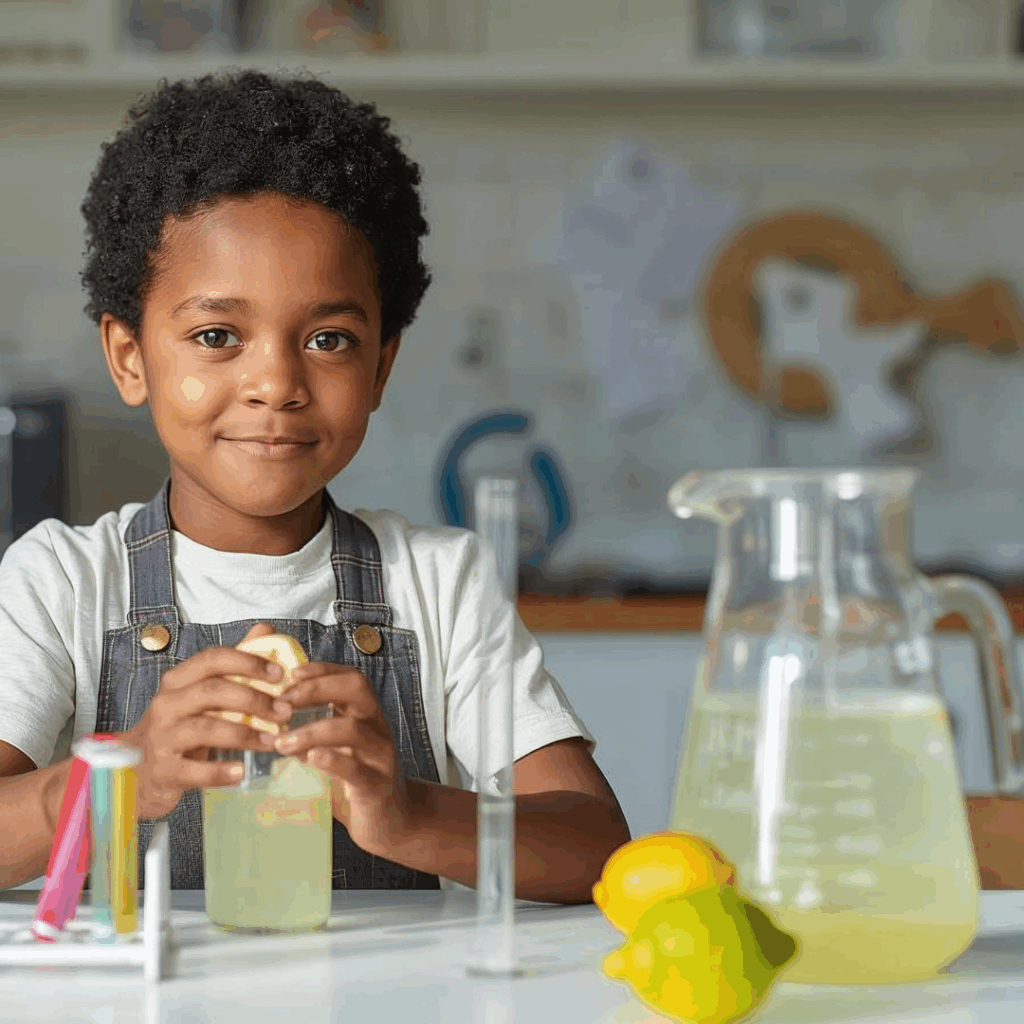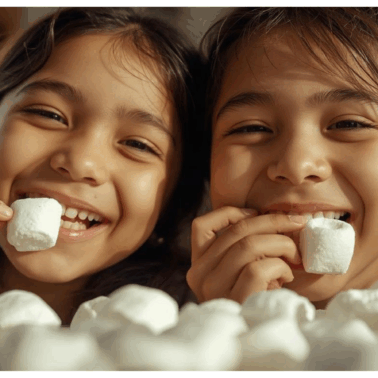At Playful Chef, we believe learning happens best when kids get to taste the science! In this colorful collection of edible experiments, your little chef will mix and fizz their way through fun kitchen reactions that double as delicious treats.
These hands-on activities are perfect for ages 5–6, with simple instructions, everyday ingredients, and plenty of learning baked right in. Before you get started, download our Experiment Observation Sheet to get the most out of your experience! Let’s cook up some science!
Kitchen Chemistry At-A-Glance
| Experiment | Age | Mess Level | Supervision | Allergy Watch |
|---|---|---|---|---|
| Fizzing Lemonade | 5–6 | Low | Light | Citrus |
| Dancing Raisins | 5–6 | Low | Light | None |

Fizzing Lemonade Potion
Ages 5–6
What You’ll Need:
Ingredients:
- 2 tablespoons fresh lemon juice (about ½ lemon)
- 1 teaspoon sugar (optional for taste)
- ¼ teaspoon baking soda
- ¼ cup cold water
How To:
- In a clear cup, mix the lemon juice, sugar, and water.
- Stir gently to dissolve the sugar.
- Let your young chef slowly sprinkle in the baking soda and watch it fizz!
- Stir and sip — the potion will be slightly fizzy and tangy.
Science Vocabulary:
- Acid – A sour-tasting ingredient (like lemon juice or vinegar).
- Base – A bitter-tasting, powdery ingredient (like baking soda).
- Chemical reaction – When two ingredients change each other and make something new (like fizz!).
- Carbon dioxide – A gas that forms bubbles in fizzy drinks and baked goods.

Dancing Raisins Soda Show
Ages 5–6
What You’ll Need:
- Clear soda (club soda or lemon-lime)
- A few raisins
- Clear cup
How To:
- Drop raisins into soda.
- Watch them rise and fall like tiny scuba divers!
This up-and-down movement continues until the soda loses its fizz — or the raisins get too soggy to bounce back.
Science Vocabulary:
- Carbonation – The gas bubbles in soda that make it fizzy.
- Buoyancy – How well something floats or sinks in a liquid.
- Density – How heavy something is compared to how much space it takes up.
- Surface tension – The skin-like layer on top of the soda that helps hold the bubbles together.
Bonus: Experiment Observation Worksheets
Turn your kitchen into a playful science lab! Grab this free printable:
Wrap-Up: Eat, Experiment, Enjoy!
These edible experiments make it easy for kids to see how cooking and chemistry go hand in hand — and feel the pride of creating something delicious on their own. Add an apron, a timer, and lots of “oohs and aahs” for the full Playful Chef experience.
Want More?
Check out our full line of Playful Chef cooking kits that blend STEAM learning, real-life cooking and baking skills, and playful storytelling. From cakes to chemistry, we’ve got your chef covered.

